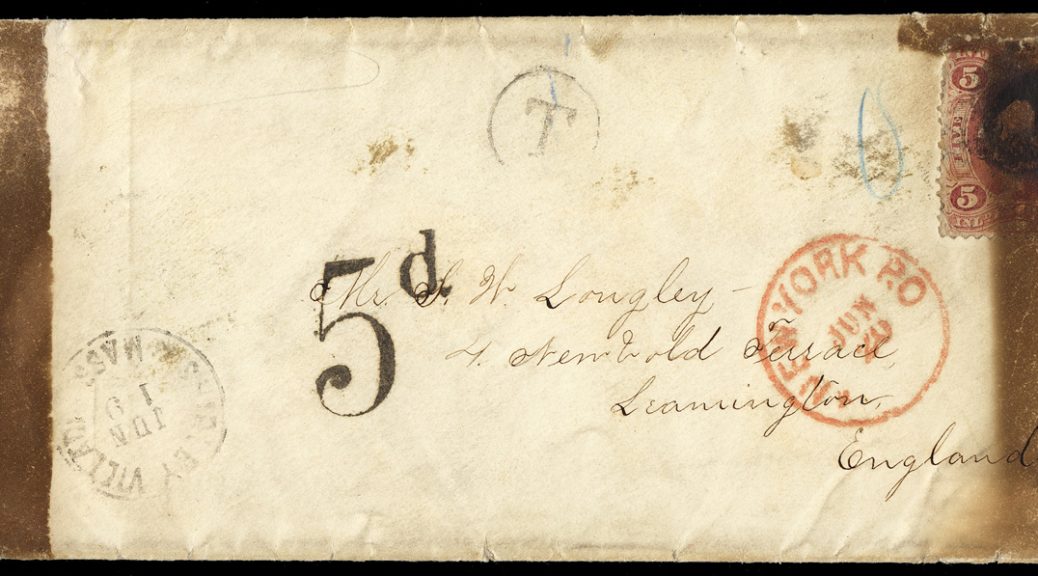
Definitely An “Ugly Duckling” But I Love It Anyway!
At CHICAGOPEX last month, I stopped by Labron Harris’s booth and asked whether he had any illegal usages of revenues as postage available, and he said “I’ve got an ugly one, but you might like it.”
Well, he was right on both counts. Definitely not for the condition purist, as it has considerable… “character.” 😉
It’s a 1st Issue 5-cent Inland Exchange (R27c) used illegally as postage on an 1876 cover to England, caught, and assessed postage due, currently the earliest example that Labron has seen of UPU “X and O” postage due markings. It is the first cover showcased in his September 2019 American Philatelist article “Early U.P.U. Treatment of Invalid Postage”.
I won’t post the entire article, but I will quote the first 5 paragraphs of the article, as they relate specifically to this cover:
Quote:
Tic-Tac-Toe is a game people have played for generations — a game of “X”s and “O”s played within a grid of perpendicular lines. Three “O”s or “X”s in a straight line wins the game. In the years after the formation in 1874 of the organization that standardized international postal rates — the Universal Postal Union (UPU) — participating countries had another use for these letters.
If someone tried to send a letter without the proper postage of the country it was being sent from, a postal clerk would place one or more “O”s around the perimeter of the stamp to show it was invalid. After a few years, they also began using “X”s to indicate this invalidity, along with drawing lines around the stamp for the same purpose. The clerk, after invalidating the stamps, would mark the cover with the appropriate postage due markings and it would enter the mailstream and be sent on.
During the period of the covers shown here, the postage due rate was double the deficiency or amount short paid. I have accumulated these covers for many years, and this article illustrates various usages of these markings on covers.
The cover in Figure 1 is the earliest use I have seen to date, and it falls under the category of “ugly, but scarce”. Even a professional restorer would have trouble making it look presentable. It is a first-year usage under the UPU postage due rules. It was franked with a 5¢ Inland Revenue stamp to pay the 5¢ UPU rate, and mailed from Shirley Village, Massachusetts, to England.
Upon reaching New York, it was first accepted as fully prepaid, indicated by the orange-red “NEW YORK P.O” transit marking. The revenue stamp was subsequently noticed and a New York postal clerk placed the blue “O” to the left of the stamp to show that it was invalid for postage, applied the “T” in a circle to show postage due and a black New York cancel was placed on the reverse to show the postage was not paid. Upon reaching England, it received the bold black “5d” marking to show the postage due amount (double the short paid amount, 2½ pence being the English UPU rate, imposed as a penalty for underpaying the correct fee by using a postally invalid stamp). The cover at last arrived in Leamington, England, July 1, 1876.
